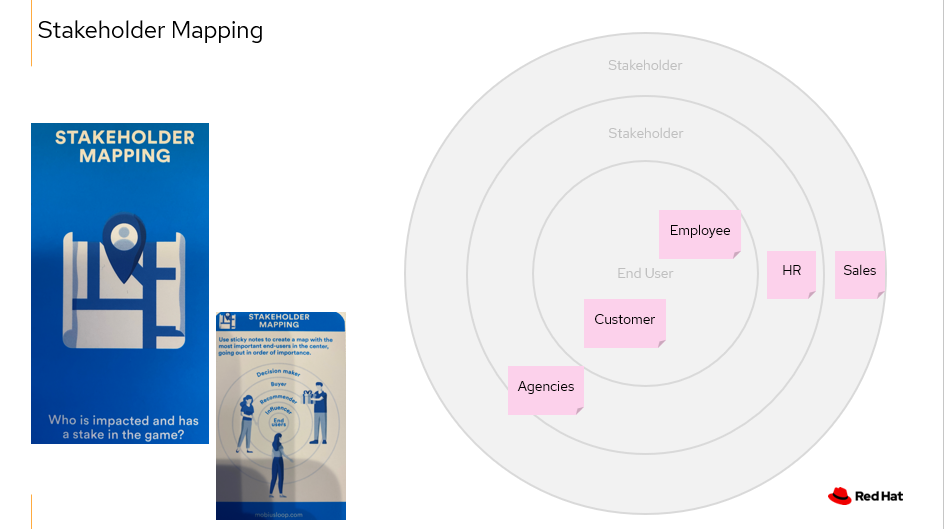Stakeholder Mapping (Mobius Outcome Delivery)
Who is impacted and has a stake in the game?
Stephen Goto
What Is Stakeholder Mapping (Mobius Outcome Delivery)?
Stakeholder Mapping is an exercise to identify who is impacted and has a stake in the business. We use a set of concentric circles to identify the most important stakeholder, followed by additional stakeholder with less influence as we move outward.
Why Do Stakeholder Mapping (Mobius Outcome Delivery)?
Stakeholder Mapping helps us identify the following.
- The most important stakeholder, who might be the end user of the product or someone we are targeting when thinking about our product design.
- Secondary stakeholders that the end user would interact with directly, such as a sales person, agency, or call center.
- Other stakeholders that the secondary stakeholders interact with, such as a loan officer, actuary, or other internal decision maker.
- By identifying these stakeholders and determining the links in the interactions, we can narrow down which user experience we want to target for our product.
How to do Stakeholder Mapping (Mobius Outcome Delivery)?
-
Prepare a diagram with three concentric circles. Label the innermost circle "Primary Stakeholder," then "Secondary Stakeholder" for the next circle, then "Other Stakeholders" for the outermost circle.
-
Place one box in the innermost circle and identify one Primary Stakeholder. This may be the end user of the product or someone we are targeting directly. Be sure to narrow down this person as much as possible. We don't want generic phrases like "customer" or "user."
-
Move to the next concentric circle and think about the Secondary Stakeholders. Who does the Primary Stakeholder interact with when using our product or working with our business? This could be a salesperson, online chat representative, or and agent, for example. Draw lines from the Primary Stakeholder to the Secondary Stakeholders to show that there is a direct interaction.
-
Move to the outermost circle and think about the Other Stakeholders. Who do the Secondary Stakeholders interact with? This could be a loan officer, actuary, or internal decision maker, for example. Draw lines from the Secondary Stakeholders to Other Stakeholders to show the interactions.
-
Look at the connections and identify which interaction you would like to focus on in your product design. There might be a connection from the end user to call center, then to an actuary. The product could focus on how to make this experience smooth and faultless. Once you decide on which interaction you want to focus on, draw a circle around that interaction.
- We do not necessarily need a full connection from the Primary Stakeholder out to Other Stakeholders before moving on to design the experience. We could focus only on the Primary Stakeholder, the Primary Stakeholder to Secondary Stakeholder, or even Secondary Stakeholder to Other Stakeholder. The idea is to narrow down which stakeholders and interactions we are thinking of when designing the user experience.
- Note that if you decide to not include the Primary Stakeholder in your experience, it may be a sign that you need to re-think who your Primary Stakeholder really is.
-
Once you complete the Stakeholder Mapping, hang it in a place where the team, department, business unit, or organization can see it at all times. This is not a static document. It's a status board that shows the current state, and it needs to be updated regularly.
-
The next step is to create Motivation Maps for each of the stakeholders identified to be in the interactions that you want to explore.
Look at Stakeholder Mapping (Mobius Outcome Delivery)
Links we love
Check out these great links which can help you dive a little deeper into running the Stakeholder Mapping (Mobius Outcome Delivery) practice with your team, customers or stakeholders.

